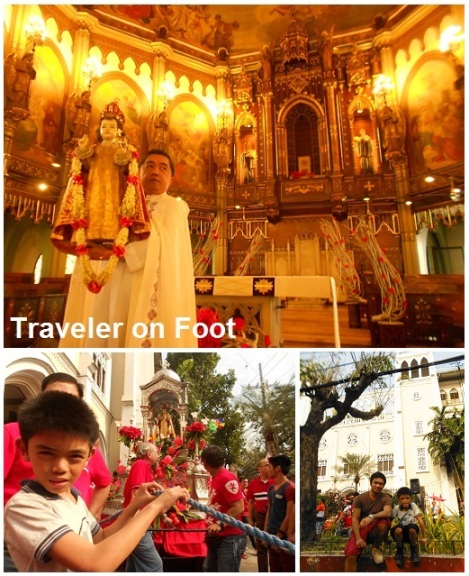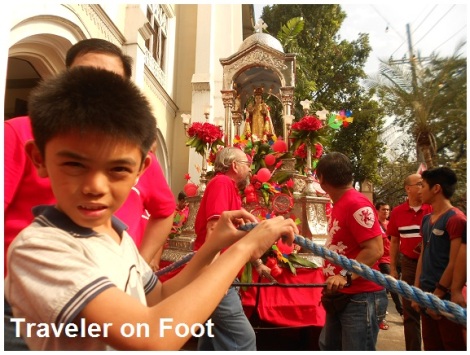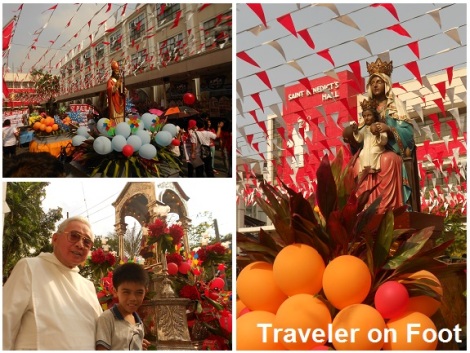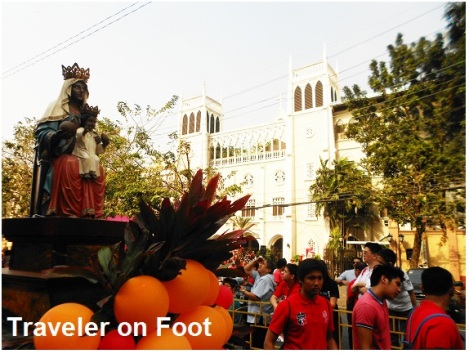RED IS OUR COLOR. Current and former students of San Beda College know that red is our color and the last Sunday of January is the Pista ng Santo Niño.
It has been a tradition that only at this time of year that the image of the Santo Niño de Praga is taken down from its niche high in the main altar of the Abbey of Our Lady of Monserrat in Mendiola. Devotees form a long line to have the chance to touch and kiss the carved image of the Holy Child before it is mounted to its silver carroza for a solemn procession around the San Miguel district of Manila.

STO. NIÑO DE PRAGA. Not too many people know that during the first Pista ng Sto. Niño in 1904, a framed picture of the Holy Child was taken to the procession in lieu of a carved statue. The exquisitely carved statue of the Santo Niño de Praga that we see today was commissioned by famous santero Máximo Vicente for the Benedictines of Mendiola.
The cult of the Holy Child in the country began four centuries ago. The image of the Sto. Niño that arrived in the Philippines with Ferdinand Magellan in 1521, that was recovered and re-enthroned by Miguel Lopez de Legazpi and enshirned today in the minor basilica in Cebu is the oldest Christian image in the country. The Sto. Niño de Cebu is believed to have been carved in Flanders in the 15th of century and was presented as a baptismal gift to the converted Queen Juana.

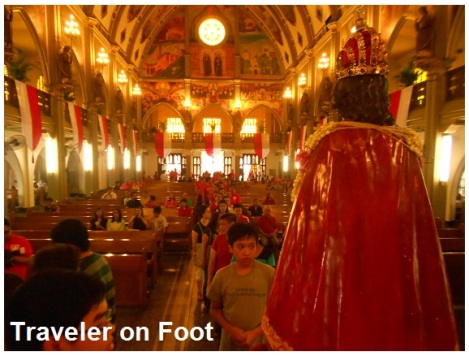
FIRST PISTA NG STO. NIÑO. The Benedictine monks began to spread the devotion to the Santo Niño de Praga in the Philippines only during the last turn-of- the-century. Its first devotees were the students from the Colegio de San Beda who establish the Confraternity of the Infant Jesus. The traditional procession of the Sto. Niño with the image made by Maximo Vicente as the focus of devotion was first held in January 20, 1905.
The solemn tradition lives on today with devotees forming a long line under the magnificent murals and paintings of the abbey. It is a moving scene to witness how the young and old have a quick moment to touch, kiss and say a prayer to the Santo Niño before it is taken to the procession.

EL CAPITAN GENERAL DE LAS ISLAS. With the peeling of the church bells, the Santo Niño is brought to the silver carroza waiting by the church entrance. A huge crowd in red clothes cheers as the carroza bearing the Santo Niño is pulled and joins the procession.
Red is the color of San Beda College since its students are traditionally known as Red Lions. If this passionate and heroic color has any connection to the Santo Niño, it must be that red symbolizes the color of the General. Remember that when the Santo Niño was introduced in Cebu, he was given the title as El Capitan General.
SOLEMN PROCESSION. While most Sto. Niño festivals around the country are known for the mardi gras-type of parade, the Santo Niño procession led by the Benedictine community and San Beda College students and alumni is simple and sober. Joining the Santo Niño de Praga in the procession are images of Benedictine saints like St. Benedict of Nursia, St. Bede or popularly known as Venerable Bede and the patroness of the abbey, Our Lady of Monserrat.
EPILOGUE. As the procession inched its way around the San Miguel district, participants recite the rosary or exchange pleasantries as this event is also a reunion among the alumni of the college. It is an important event that proud Bedans look forward to for us reconnect with our brothers and reflect on the values that we’ve learned in school.
